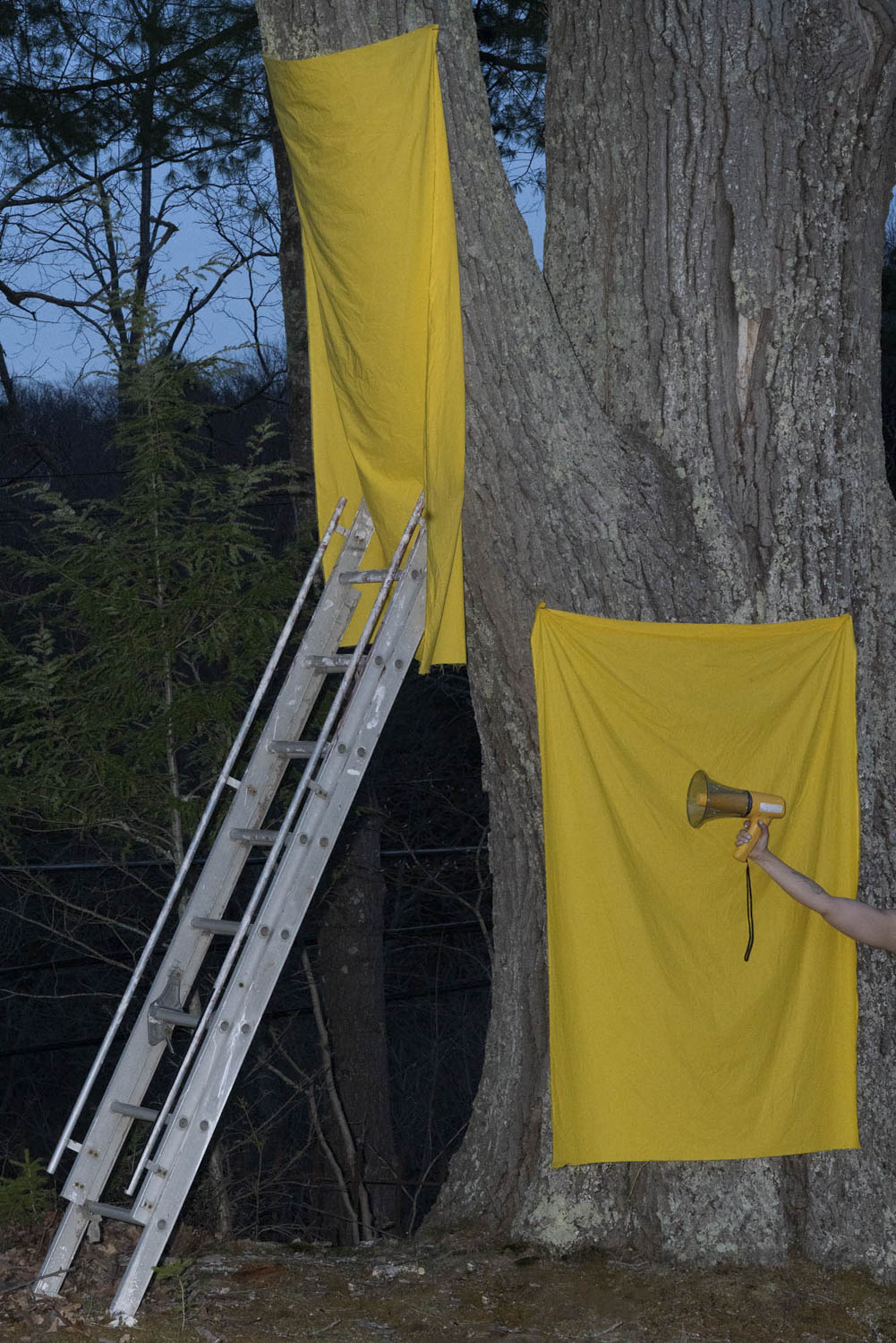
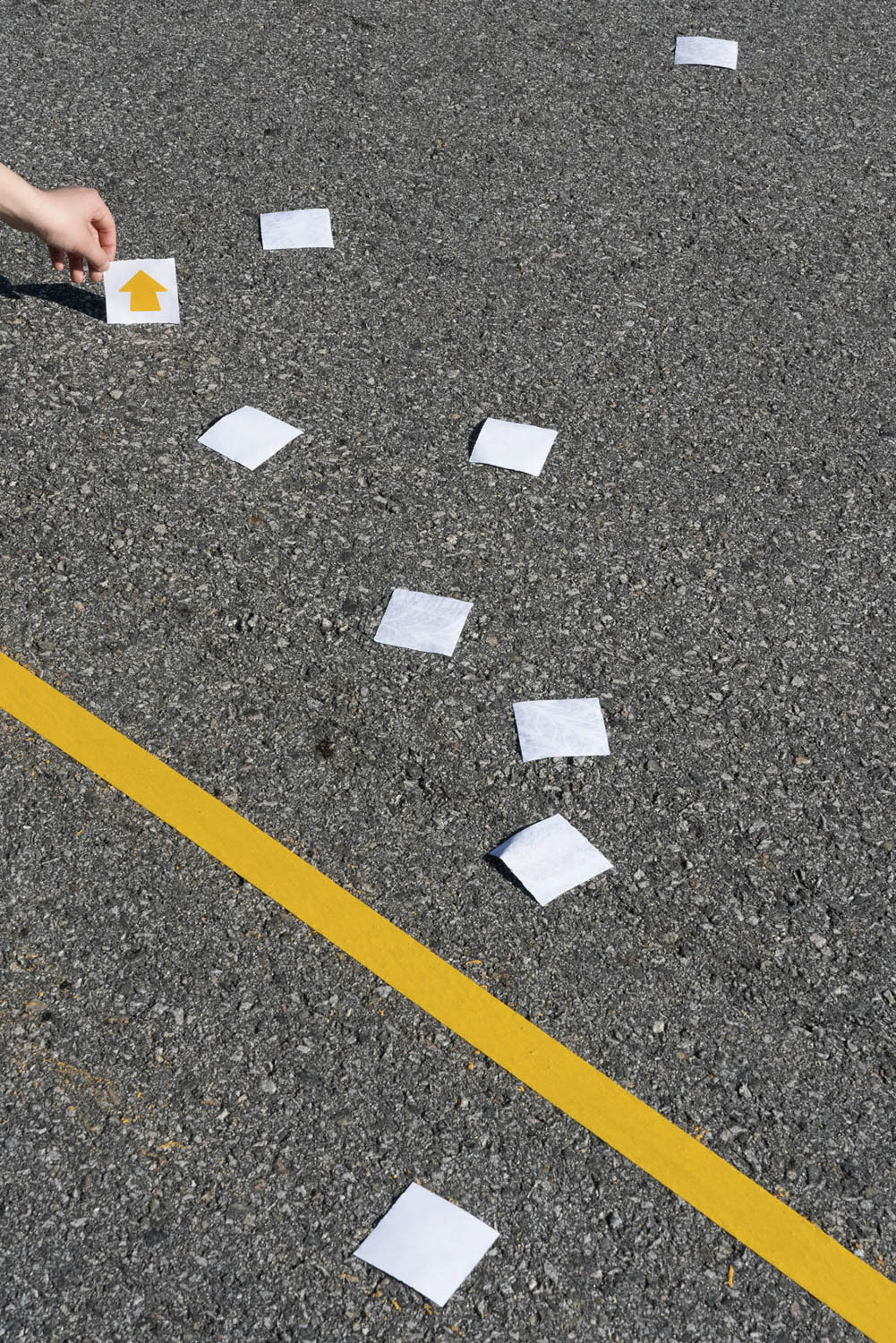


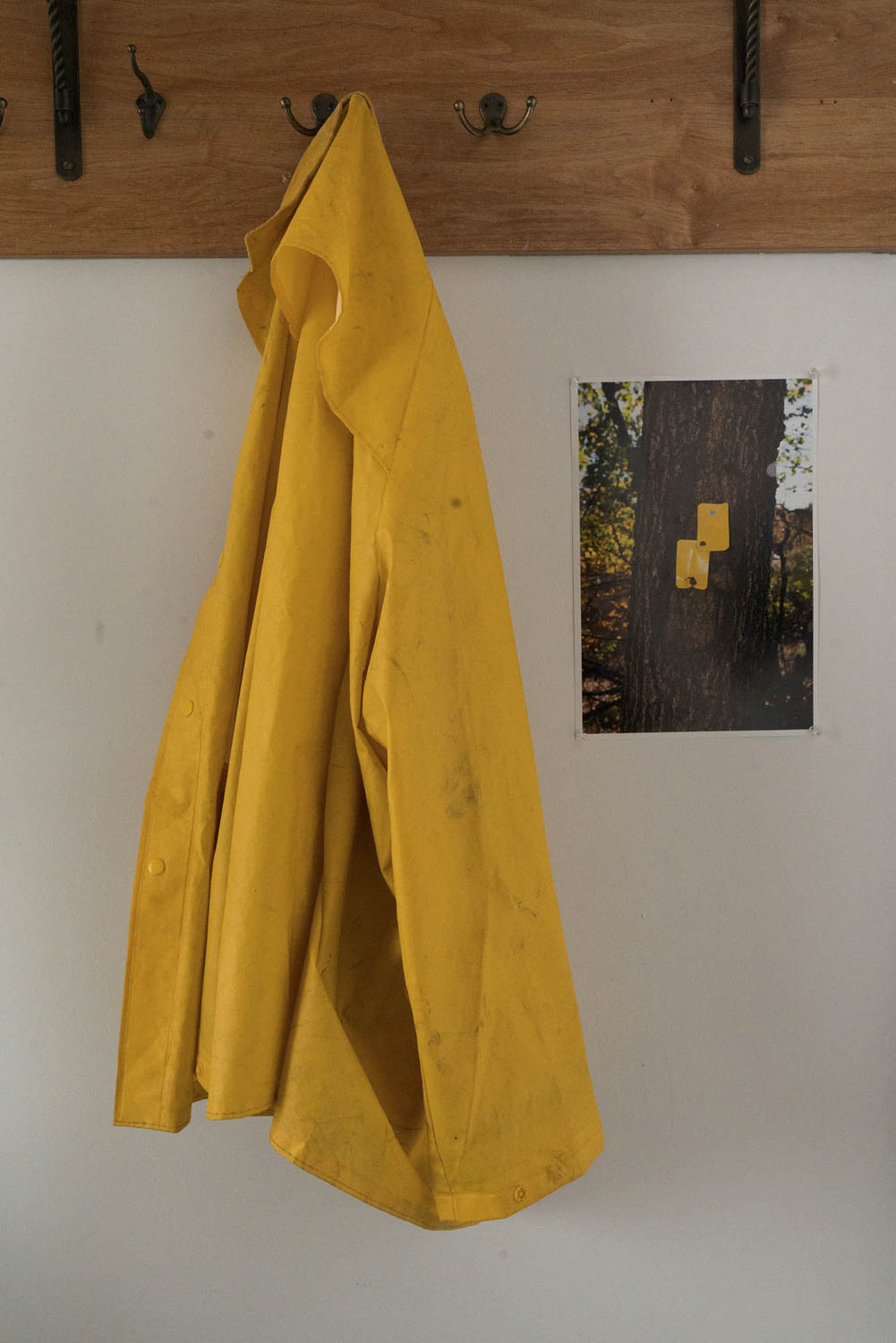



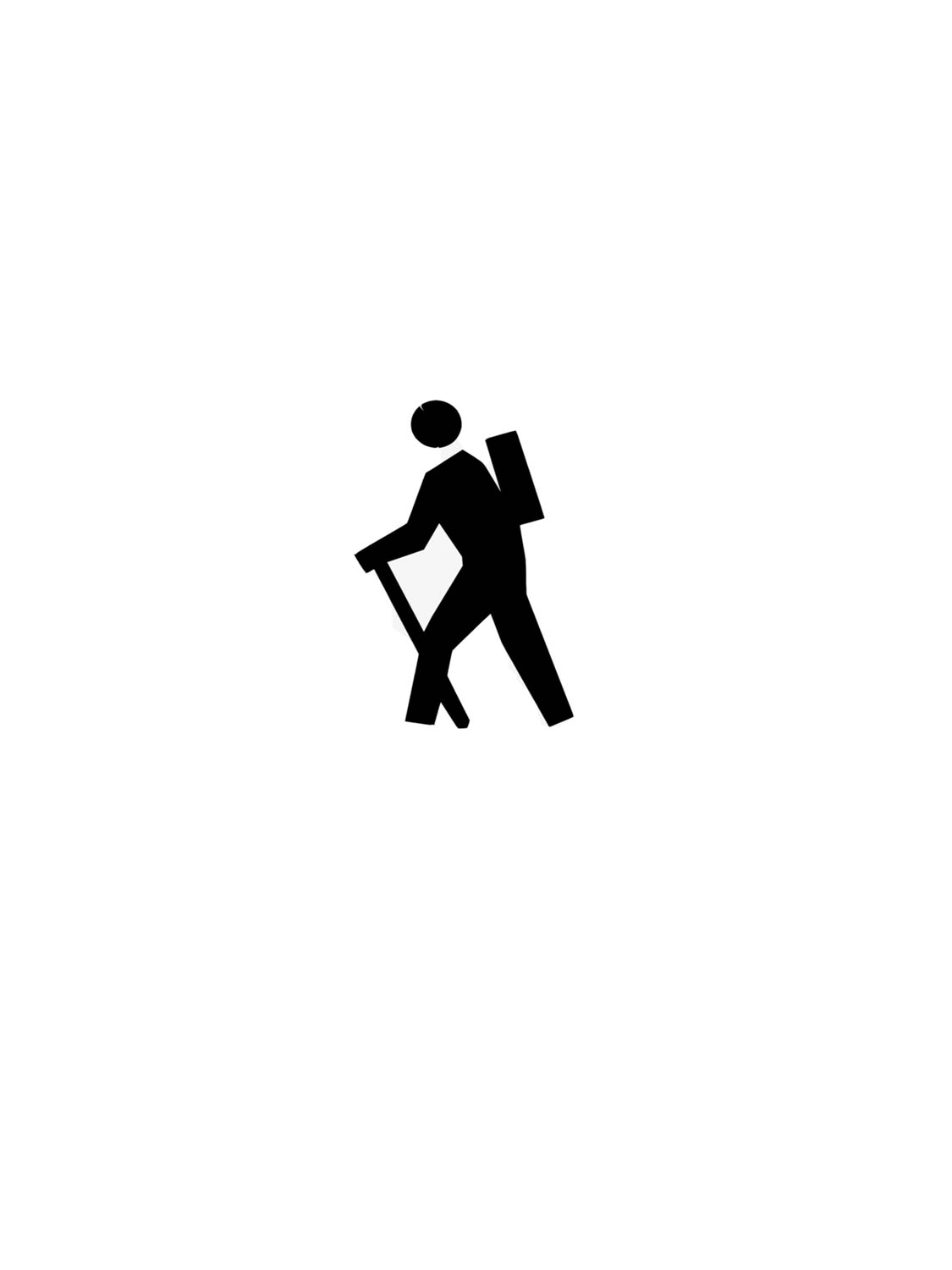
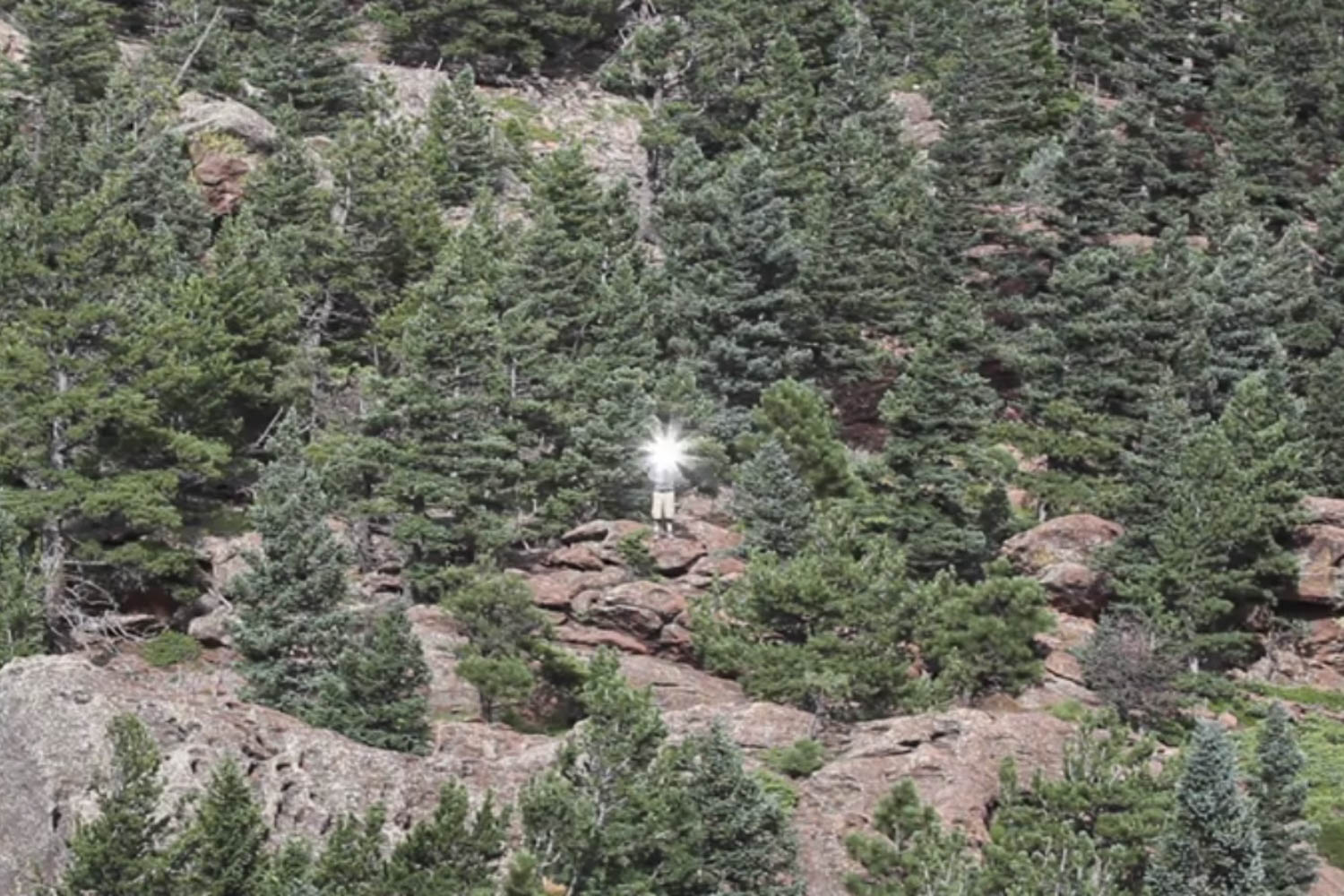

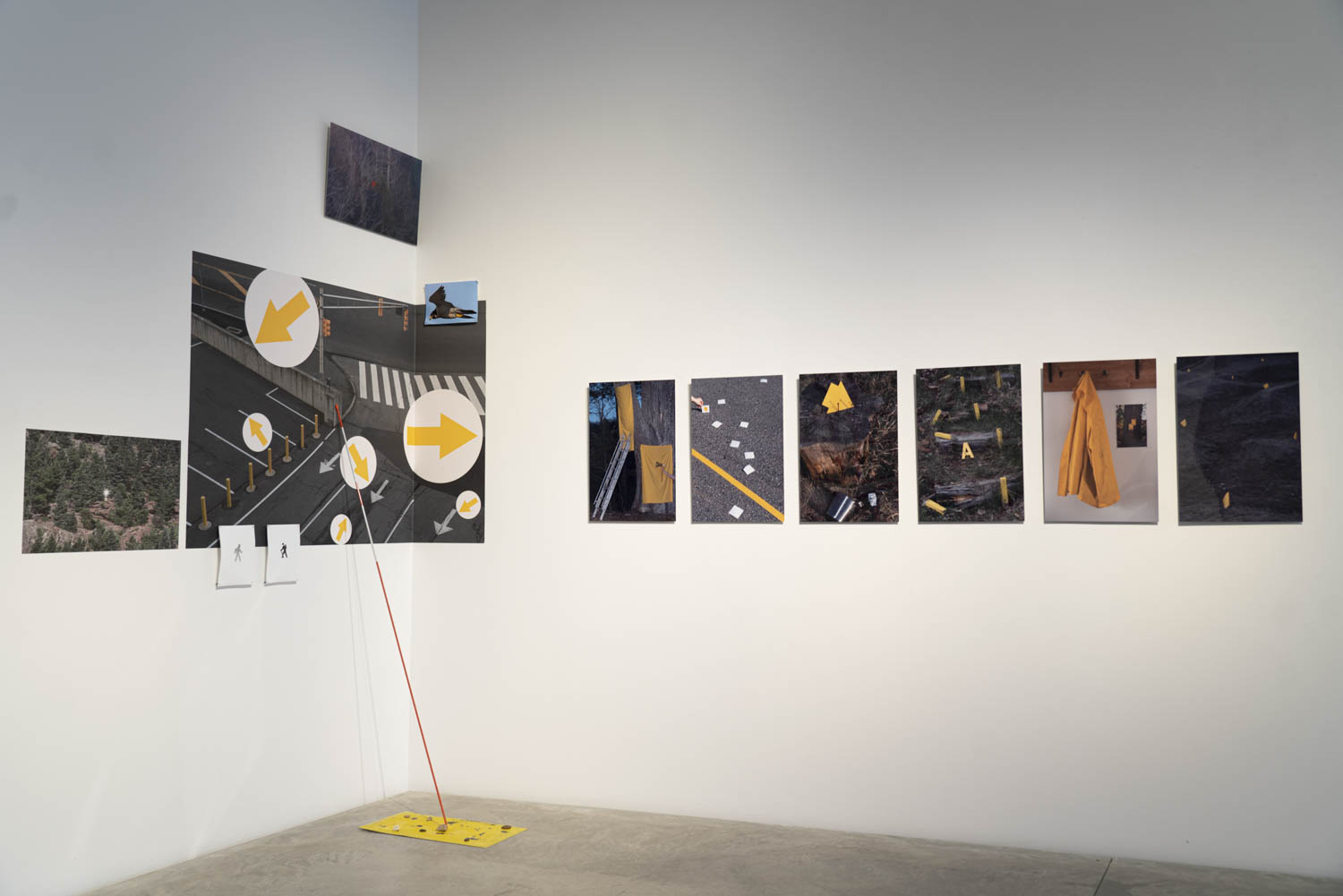
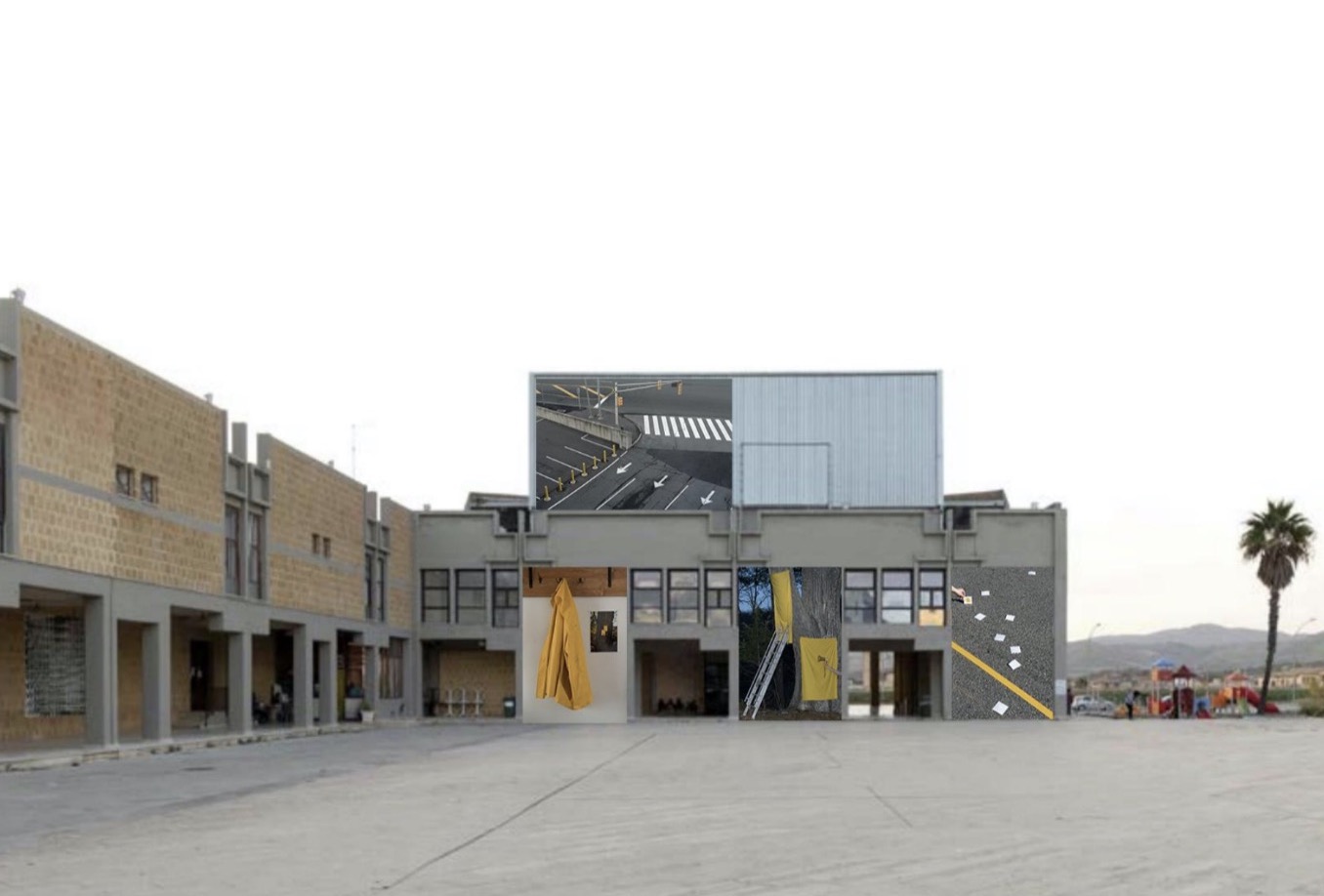

A Walk with Blaze
2019 - 2021HD metal prints, adhesive vinyl, aluminium sheet, spray paint, ink, stone, mixed media
In the summer of 2019, I hiked at Harriman-Bear Mountain State Park in New York with a group of people. Repeatedly walking by unknown markers with different patterns, forms and colors, I started to stop and get closer to observe them. Some markers were painted on the stones, some were nailed on the trees as a piece of metal. Some places were densely populated with them, some were spread out. Somewhere around a lake we finally got a chance to have a rest. I went back onto the trail and started to reengage with those markers in different ways: I ran past them at different speeds, recording the sound of my breathing and fleeting footsteps and the sound of the wind, made by me or nature itself--I could not really distinguish. Some days after I finally figured out they were called trail markers. That memory of my running past the markers had been circling around my mind for months, until I moved to a place in the middle of nowhere during the pandemic, and I had the opportunity to engage with them in a deeper way. At first I made arrow-shaped trail markers with paper, let them lie on the road, drift in the river and placed them on rocks and trees. Later on, I became a volunteer at New York New Jersey Trail Conference where I maintained Yellow Trail at Garret Mountain Reservation in New Jersey, nailing trail markers into the trees with hammers, cutting branches which blocked the trail with clips.
Guided by my practice of drifting and encounters with trail markers, I became interested in how the sign of a trail marker guides me to open up a new world of signs and language, both physically and virtually, across urban and natural spaces. Influenced by the Fluxus movement in the 1960s, I am also interested in creating interventions in different environments involved with my practice of aimless wanderings with/without prop and prompts.
“What does this part of landscape in New York and New Jersey mean to me?”, is also a question I am thinking about in this project. I like the story of an American man getting lost when he was exploring London because of the foggy weather, and he founded the Boy Scouts after he came back to the United States. I often think about how in Beijing several years ago, patients felt very confused about where they needed to go to see the doctor in a hospital because of less-considered spatial design, misguided signs, and markers in the interior space. Trail markers as a kind of both intervention and caretaking is something I would also like to construct in my homeland. Intrigued by the tension among form, color and sound in this project, I am thinking about a trail with directional markers as a metaphor of the psycholinguistic structure of “entry-body-exit” in our daily life.